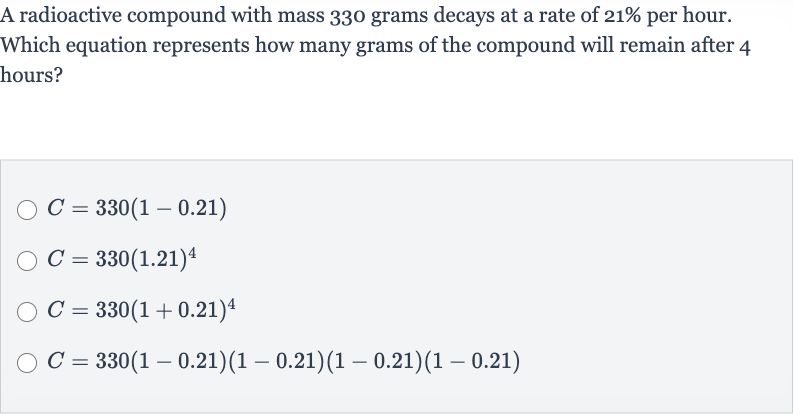Full solution
Q. A radioactive compound with mass grams decays at a rate of per hour. Which equation represents how many grams of the compound will remain after hours?
- Question Prompt: The question prompt is: "Which equation represents how many grams of the compound will remain after hours?"
- Decay Process: First, we need to understand the decay process. The compound decays at a rate of per hour, which means that each hour, only () of the compound remains.
- Exponential Equation: To represent this decay as an exponential equation, we use the formula , where the decay factor is minus the decay rate (expressed as a decimal).
- Convert Decay Rate: Convert the decay rate of to a decimal by dividing by . This gives us .
- Find Decay Factor: Subtract the decay rate in decimal form from to find the decay factor. This gives us .
- Write Decay Equation: Now we can write the exponential decay equation using the initial amount of grams and the decay factor of . The time is represented by the variable , which in this case is hours. So the equation is .
- Substitute Time: Substitute for in the equation to find the amount of compound remaining after hours. This gives us .
More problems from Write exponential functions: word problems
QuestionGet tutor help
QuestionGet tutor help
QuestionGet tutor help
QuestionGet tutor help
QuestionGet tutor help
QuestionGet tutor help
QuestionGet tutor help
QuestionGet tutor help
QuestionGet tutor help

